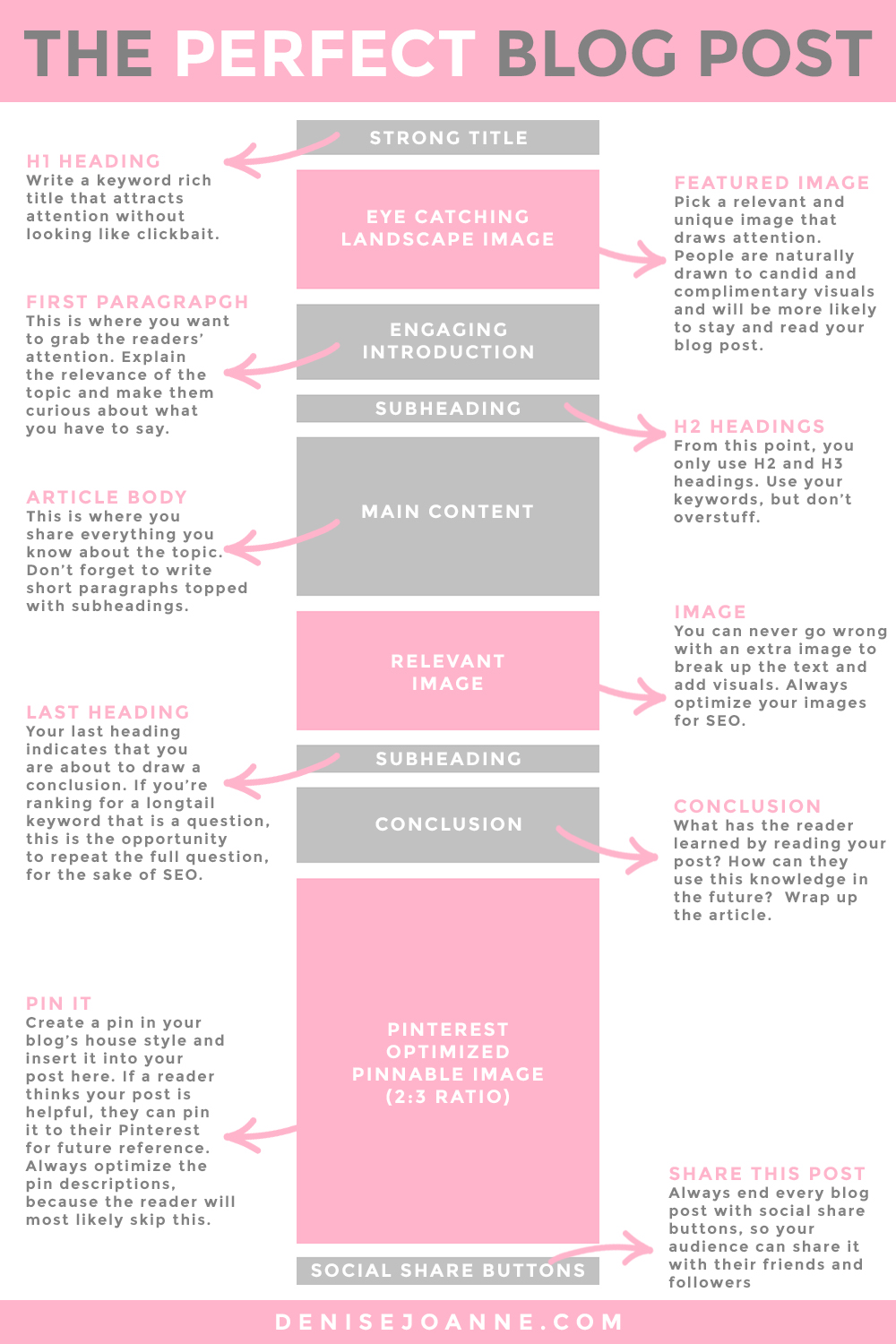This is for y’all one-person marketing “teams” and founders out there. I feel you and this is my attempt to help.
Disclaimer: I’ll be heavily borrowing from my favorite marketers and newsletters: Elena Verna, Leah Tharin, MKT1, Kyle Poyar, Lenny Rachitsky, Julian Shapiro, April Dunford, Kevin Indig, Reforge, Demand Curve.
Part 3: Content Marketing & SEO
In this part of the handbook let’s dive deep into the world of content marketing and SEO. We’ll cover stuff like:
- What does content marketing really mean?
- How do I choose the right content types?
- How do I do keyword research?
- How do I write the articles?
- Can I use AI, please?
- How do I generate backlinks?
Researching, Choosing, and Creating
Startups often fall into the trap of confining their content strategy to a strict output:
“Produce 10 blog posts a month”, and believe the job’s done.
This linear approach is restrictive and overlooks the multifaceted nature of effective content. It’s crucial to break free from traditional content boundaries.
It’s a mistake to see content only as blog posts or mundane case studies. Content can be so much more:
- Spreadsheet templates
- Free tools like calculators, generators, templates, etc
- Detailed guides
- Trend analyses
- Data-driven studies
- Tactical guidelines on niche subjects
- Q&A sessions
- Webinars and podcasts
- Video tutorials
- Engaging Twitter threads
- In-depth tool comparisons
- Polls and insights
… and so many other combinations of these formats.

When creating content, adopt a product-oriented approach. Here are three foundational principles:
- Problem-Solution Paradigm: Content should address the audience’s pain points, even if these don’t directly relate to your product. It’s based on the “30% juice rule”. Essentially, the audience is looking beyond just your product features. By addressing a broader set of issues, you attract more potential users. Once engaged, nurture them towards more product-specific content.
- Differentiation: Before even starting, draft a GACC brief. It ensures your content stands distinctively apart from competitors, providing unique value.
- Repurposing: A single content idea isn’t a one-off. Reformat, extend, update, or redistribute it. Let each idea give birth to multiple content offspring.
Just remember the content journey isn’t over post-publication. You need to make distribution part of your content strategy.
How to Choose the Right Content
*Heavily borrowed from Demand Curve’s Growth Program. Hope you guys don’t mind me sharing some course content here. It’s an amazing (if a bit pricy) program. Highly recommend.
Guys at the Demand Curve, say that there is no “right” way to do content marketing – to decide which strategy is best for your company, start by answering these two questions:
- What kind of content would your potential customers be most interested in?
- What kind of content can naturally segue into a pitch for your product?
They’ve also developed a framework to help:
- Search interest: Is there a high search volume for your product?
- Product shareability: Do users find your product shareworthy?
- User content: Do users create content using your product?
- Data and research: Does your brand have access to proprietary data? Alternatively, does it conduct industry research?
- Emotional appeal: Does your product or brand create a strong emotional impact?
- Thought leadership: Do you or your team have lots of industry expertise to share?
| Content Marketing Scorecard | |
| Search Interest | Yes/No |
| People frequently look up product reviews in your industry and/or spend a long time researching their options before making a purchase. Example: Project management platforms, nutritional supplements, personal electronics | |
| Your niche/the problem you solve is relatively complex. Users often have many questions. Example: Many people new to digital marketing search for SEO guides and tutorials. | |
| There is a high search volume (>1,000) for your main target keywords. | |
| Product Shareability | |
| Your product can be easily photographed or recorded in action. Example: GoPro, Airbnb | |
| Your product has a unique design or appearance. Example: PillowCube’s square-shaped pillows | |
| Your product is very innovative—there aren’t many competitors doing the same thing. Example: Pair Eyewear, Squatty Potty, Acorns | |
| User Content | |
| Your product can be used to create content. Example: People make GIFs and games with Giphy. People create playlists on Spotify. People record videos on Loom. | |
| Users actively post images, reviews, or testimonials about your product online. Example: People share photos of their Warby Parker frames on Instagram. Students and teachers share finished Skillshare projects on personal blogs. | |
| A community exists for your users. This may be one you’ve created or users have organically created. Example: Hosts on Airbnb have regional Facebook groups to connect with other hosts. There are also Instant Pot groups on Facebook for users to share recipes. | |
| Data and Research | |
| Your company conducts industry research. Example: Salesforce researches both B2B and B2C companies in a variety of industries. | |
| Your company has in-house data scientists or researchers. | |
| Your company has exclusive proprietary data. Example: Zillow has real estate data about every property listing created on its platform. Uber has data about all of the trips taken using its rideshare service. | |
| Emotional Appeal | |
| Your brand has a compelling or socially conscious mission. Example: Who Gives a Crap donates 50% of profits to health initiatives. | |
| Customers have a strong sense of brand loyalty to your company or product. Example: Apple, Nike, Lululemon, Starbucks | |
| Your product can have a big emotional impact on users. Example: Headspace eases user’s stress and anxiety. 23andMe reveals details about people’s health, background, and genealogy. | |
| Thought Leadership | |
| There are well-known or established experts in your industry. Example: Brian Dean is known as an SEO expert. | |
| You have a company figurehead—someone knowledgeable about your industry and who publicly represents your brand. Alternatively, someone on your team is willing to be a company figurehead. Example: Tim Soulo is the figurehead for Ahrefs. | |
| Your team has in-house experts that can educate others about your industry. |
Also, ask yourself these questions:
- Can I Realistically Produce Quality Content?
- Do I have the required resources: time, budget, and expertise?
- Considering the necessary tools and know-how, can I create content like high-quality videos?
- Can I Consistently Deliver Quality Content?
- Do I have the capacity to produce impactful content regularly?
- Beyond a few standout pieces, can I maintain content quality over time?
- How Will My Content Stand Out?
- In a crowded content landscape, what will set my content apart?
- What unique perspectives or insights can I offer?
- Where and How Do My Target Users Consume Content?
- Which platforms and formats are preferred by my audience?
- How can I adapt my content strategy to their preferences?
How to do Keyword Research
Once you’re done deciding what kind of content to product, you’ll have to do some keyword research (yes, even if you’re going for video content).
Here are three main ways to start generating keywords:
- Brainstorm: Use your intuition to brainstorm potential search terms.
- Value Propositions: Identify keywords based on the problems your product solves.
- Google Autocomplete: Type your product into Google and note the autocomplete suggestions.
Tip: Always note down variations of keywords that pop up during your brainstorm.
The keywords generated here are a good starting point for what users might search, but without any quantitative data, they’re only guesses at best for what users are actively searching.
Copy each group of keywords, one at a time, and paste them into Semrush’s Keyword Magic Tool.
In the Magic Tool, we start the same way and look at the broad matched and related keywords and categories and phrase matches. This way, we now have a comprehensive understanding of the keyword environment around our topic.
The whole point of this is to just extract relevant keywords and group them in thematic clusters. Export them from Semrush and copy them in Google Sheets.
Bellow is how we actually evaluate which relevant keywords we use.
Keyword Metrics
Here are the metrics for each keyword:
- Volume – The average number of monthly searches for a given keyword over a 12-month period.
- KD – Keyword Difficulty shows you how hard it would be for a website to rank organically in the Google top 10 for the analyzed keyword. The higher the percentage, the harder it will be to achieve high rankings.
- CPC – Average price in USD advertisers pay for a user’s click on an ad triggered by a given keyword (Google Ads). Use sort icon to display results in ascending or descending order..
- Competitive Density — The level of competition between advertisers bidding on a given keyword within their PPC campaigns. Competitive Density is shown on a scale from 0 to 1.00 with 1.00 being the most difficult to rank for.
With this we evaluate each keyword and filter out the ones we don’t need. The way to do it is by what I call the Cross Green Method. You’ll can see it in action on Google Sheets.
It’s very simple. First you put your chosen keywords with these metrics in Google Sheets. Then you do color coding:
- Volume
- Red: 100 – 2000
- Yellow: 2000 – 5000
- Green: 5000 +
- KD
- Green: 0% – 50%
- Yellow: 50% – 70%
- Red: 70% – 100%
- Competitive Density
- Green: 0 – 0.3
- Yellow: 0.3 – 0.7
- Red: 0.7 – 1
- CPC (Irrelevant and incorrect since the keyword landscape is so poor for this project)
- Green: 0.1$ – $0.3
- Yellow: 0.3$ – 0.6$
- Red: 0.6$ +
After this we just sort the Volume column descending and we see in which keywords the green colors overlap. Those are the best ones, but some with a couple of yellows and reds might also be acceptable.
Here’s an example:
Now take these clusters and create content around them.
Content Clustering
Think of them as the backbone of killer SEO. They’re not just about throwing keywords around; it’s a real strategy. By linking broader topics (pillars) to specific deep dives (clusters), you’re telling Google, “Hey, I’ve got authority here.” And the bonus? Users love it.
Dive deep, link smart, and rank high. Simple, right?
Three main types of pillar content are:
- The “Guide” Pillar Page – The guide pillar page gives a comprehensive overview of a topic that makes it an authoritative destination for those interested in the subject. It also links to related cluster pages that expand knowledge on particular aspects of the topic, often related to a specific keyword.
- The “What Is” Pillar Page – A pillar page can serve as a definitive examination of a subject — a highly useful stand-alone resource that links to related cluster pages and develops aspects of the subject in greater detail. In many ways, it is authoritative, like a guide page.
- The “How-To” Pillar Page – If you have a solution or tool to fix a problem, it can be worked in discretely and embraced if you have successfully addressed your customers’ pain points and offer a lot of good, useful information. Well-illustrated, step-by-step tutorials are often used in these kinds of pillar pages.
Writing Articles
Every author will have their own writing style, voice, and tone, but there needs to be some level of consistency, so you don’t publish anything that doesn’t position you in the right way.
Consistency adds authenticity. Here is a standard blog article structure for reference..

About Introduction and Conclusion
Each element in the article has its purpose, starting from Header 1 and ending with the conclusion, but the end and the beginning of the article are the two most important parts.
People are more likely to pay attention at the beginning, and the end of the information presented, so those are more likely to be remembered.
There are a few effects at work here.
The first one is the primacy effect. The primacy effect refers to the tendency to recall information presented at the start of a list better than information at the middle or end.
In contrast to the primacy effect, the recency effect refers to the tendency for people to more easily recall items that are presented last. For example, if you are trying to memorize a list of items, the recency effect means you are more likely to recall the items from the list that you studied last.
The truth is that people don’t actually have short Attention spans for content: They finish three-hour movies, and they binge fourteen-hour Netflix shows. What they have is short consideration spans: they must be hooked quickly.
To do so, ensure your first minute is incredible.
Ai Articles
Now I would definitely encourage you to put out human-written articles, but if you insist on mass creating articles, here’s my small playbook for that.
There’s a lot of hate for AI-generated content out there. Most of it is valid, because most of AI-generated content sucks but I can attest that if done right – it works. Here’s to give you an example of what’s possible.
You can:
- Export the competitor’s sitemap.
- Add the URLs from the sitemap into Byword’s “Write from URLs” feature and scrape the URLs.
- Byword will generate article titles and outlines based on the competitor URLs. Edit if necessary.
- Once ready, generate AI content (including images).
- Use Byword’s interlinking feature to interlink these articles.
- Publish content straight onto your website using CMS integrations.
- Submit to Google for indexing at scale using tools like Tag Parrot.
- Polish, optimize, and repeat.
Backlinks
Use this process to build relevant & authoritative SEO backlinks. Show Google that people trust you online. The key ingredients: processes, consistency, and relationships.
- Build a partner network: Partner with 100+ companies in your niche. Swap content, backlinks, and promotions on a quarterly basis. Great way to get relevant backlinks.
- Write guest articles: Find authority websites in your niche and write high-value articles for them. Get a dofollow backlink & build trust w/ their readers.
- Run an affiliate program: Offer your customers and followers the ability to promote you. Provide them with content to link back to from their site. Keep them updated monthly.
- Interview on podcasts: Get interviewed on niche podcasts. Builds awareness, gets backlinks, and creates new relationships. Use it to get on other podcasts and PR opps as well.
- Answer q’s on HARO & Featured: Use HARO & Terkel (new Featured.com) to answer q’s from journalists & bloggers. Gain backlinks as they select your content.
- Get included in existing articles: Find 1st page articles and reach out. Offer them your own content to link to that will enhance their article. Or simply ask if they’ll include you.
- Build influencer relationships: Team up with influencers in your niche to benefit them and get exposure to their audience. Offer them extra affiliate commissions.
- Publish videos regularly: Create high-value, how-to videos that are shareable. Publish and promote to your audience. Use them to enhance blog content & publish on Y T.
- Publish a free eBook: Put everything you know on a topic into a free eBook. Promote it and watch as others link back to it. Make it easy to download & high, high value.
P.S. – YouTube is the second largest search engine, right after Google, and with the AI tools out there to quickly repurpose videos into blogs, blogs into videos, and long-form videos into shorts – there really is no excuse to not do it.
Recommended Articles
- The art of content roadmapping – by Emily Kramer of MKT1
- Content marketing ≠ blog posts – by Emily Kramer of MKT1
- Stop making content distribution an afterthought – MKT1
- Content-Led SEO – Demand Curve
- Running SEO on the right operating system – Kevin Indig
Co-founder & Growth Lead at Kernel










